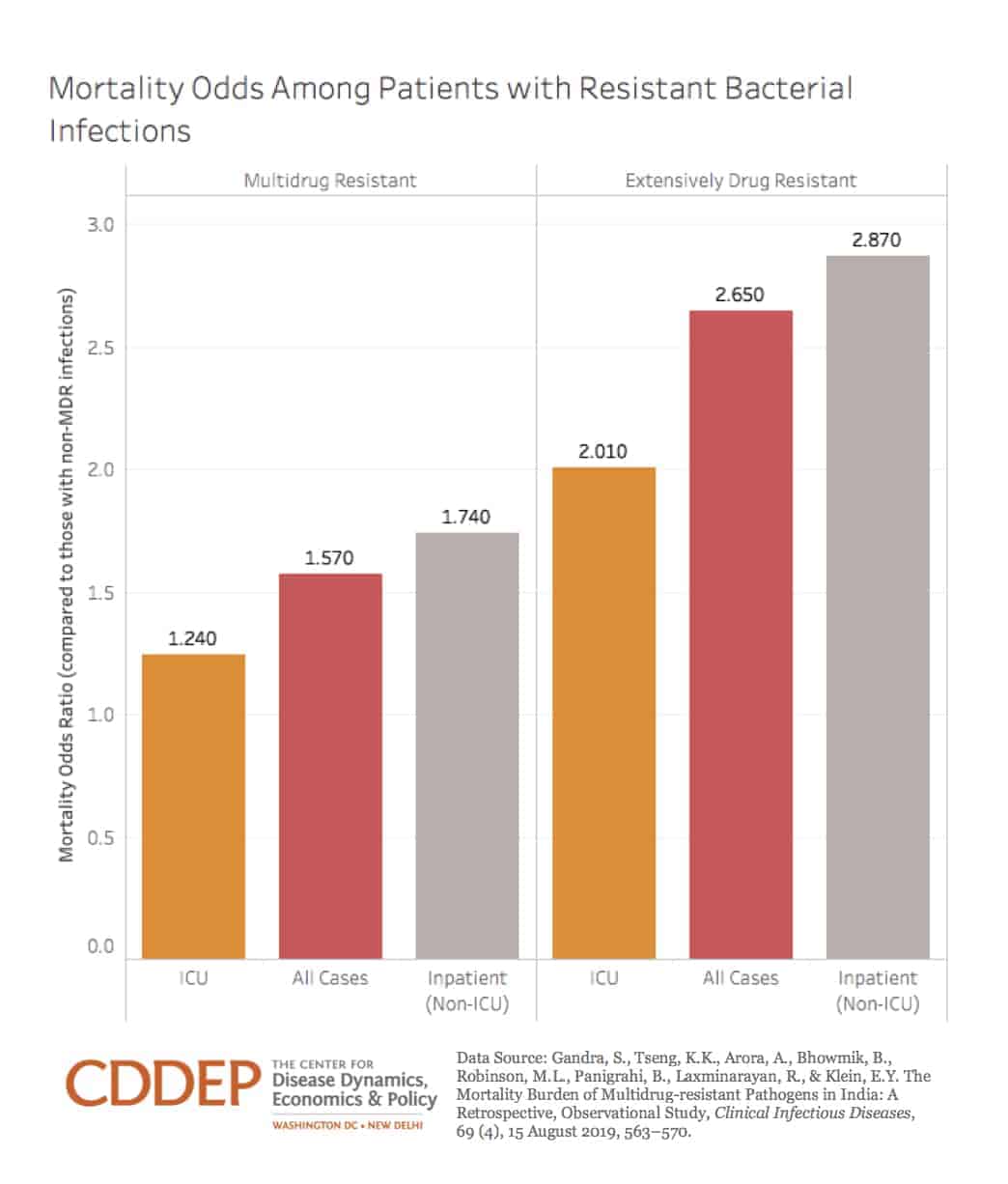August 15, 2019
Resistant Klebsiella and E. coli widespread across Southeast Asia. Researchers from Georgetown University conducted a meta-analysis of 258 studies reporting carbapenem and polymyxin resistance across 11 countries in Southeast Asia. Carbapenem-resistant E. coli was documented in 8 out of 11 countries, and Klebsiella was documented in 9 out of 11. Klebsiella resistance was >5 percent in four Southeast Asian countries (Indonesia, the Philippines, Thailand, and Vietnam), and E. coli resistance was high in Indonesia and Myanmar. [International Journal of Antimicrobial Agents]
Global measles cases have tripled since last year. The World Health Organization (WHO) released updated measles surveillance data from the first six months of 2019. Compared to the first six months of 2018, there have been almost three times as many global measles cases this year, and reported cases are the highest the world has seen since 2006. The largest outbreaks are occurring in countries with low vaccination coverage, although there have been more outbreaks in high-income countries including the United States. [WHO]
Antibiotic use linked to increased odds of rheumatoid arthritis. A group of UK researchers conducted a nested case-control study to measure the association between antibiotic use and the onset of rheumatoid arthritis. The study found that odds of developing rheumatoid arthritis was 60 percent higher among individuals who were exposed to antibiotics compared to those who were not exposed (OR=1.60). Prescriptions for antifungals and antivirals were also associated with increased odds of developing rheumatoid arthritis (OR=1.27, 1.10 respectively). The researchers suggest a potential link between antibiotic-associated microbiota disturbances and the development of chronic autoimmune disorders. [BMC Medicine]
Preterm infants tend to be undervaccinated during early childhood. In a retrospective study, a team of researchers analyzed early childhood vaccination coverage of preterm infants (born at less than 37 weeks’ gestation) who were hospitalized at urban academic medical centers in Washington state between 2008 and 2013. Findings show that preterm infants had lower odds of completion of the recommended 7-vaccine series by 19 months and 36 months of age (aOR= 0.77, 0.73) compared to infants who were born at term or post-term (37-43 weeks’ gestation). [Pediatrics]
Burden of childhood cancer disproportionately affects poor countries. Researchers used the Global Burden of Diseases, Injuries, and Risk Factors study to estimate the global burden of childhood cancer in 2017. Results indicate that childhood cancer was responsible for 11.5 million disability-adjusted life-years (DALYs) and 82.2 percent of these DALYs occurred in low- and middle-income Socio-Demographic Index locations. Childhood cancer was the sixth leading cause of the total global cancer burden in 2017. [The Lancet Oncology]
C. auris plays major role in epidemiologic shift of Candidemia in South Africa. In a new issue of Emerging Infectious Diseases, researchers note Candida auris as a major factor in the epidemiological shift of candidemia (illness present in patients with Candida in the bloodstream) in South Africa between 2016 and 2017. C. auris accounts for the cause of 14 percent of candidemia cases and is the third most common species of Candida in South Africa. The authors of this article found that prior use of systemic antifungal drugs was linked to a 40 percent increase in odds of C. auris Candidemia compared to non-C. auris Candidemia. [CDC]
Burundi has recorded 5.7 million malaria cases so far this year. According to a report from the United Nations Office for the Coordination of Humanitarian Affairs (OCHA), 5.7 million malaria cases and 1,801 malaria-related deaths have been recorded in Burundi so far this year. These case counts indicate that about half of the population has been impacted by malaria during the first seven months of 2019, however, the country has yet to declare a national emergency. [UNOCHA, All Africa]
Ebola becomes increasingly deadly for DRC children. The Ebola outbreak in the Democratic Republic of Congo (DRC) has killed four times as many children in the past six months compared to the first six months of the outbreak. Between August 2018 and August 2019, 737 children were infected and 507 children died from the virus. [Save the Children]
Ebola drugs prove effective at improving survival rates for the first time. Results from a clinical trial testing the effectiveness of Ebola drugs in 499 patients showed improved survival for the first time. Two therapies, REGN-EB3 and mAb114, improved survival rates among patients at Ebola treatment centers in Beni, Katwa, Butembo, and Mangina, hotspots in the Democratic Republic of Congo Ebola outbreak. Two other drugs tested in the trial, Remdesivir and ZMapp, had less promising results and their use will be discontinued. [STAT News]
Antibiotic use in US poultry drops substantially. The Mindwalk Consulting Group released a report estimating antimicrobial use in US broiler chickens and turkeys between 2013 and 2017. The data collected in the report covers antimicrobial use in over 7,500,000,000 broiler chickens and 164,000,000 turkeys from hatchery to slaughter. Results indicate an overall reduction in the use of medically-important antibiotics during the 5-year study period. Broiler chickens saw a substantial decrease in antibiotic use at hatchery, dropping from 93 to 17 percent, while turkeys saw a drop of 96 to 41 percent. These reductions reflect industry improvements in antimicrobial stewardship that were prompted by changes in the Veterinary Feed Directive Rule in October 2015, and full implementation of FDA Guidance for Industry #213 in January 2017. [Mindwalk Consulting Group]
Infographic of the week: Feel free to use and share widely!

CDDEP researchers examined the association between multidrug-resistant (MDR) and extensively drug-resistant (XDR) bacterial infections across India in 2015. Results indicate that patients who acquired MDR bacterial infections were 1.57 times more likely to die, compared to patients with similar susceptible infections, while patients who acquired XDR infections were 2.65 times more likely to die when accounting for age, sex, site of infection, and the number of coinfections. [CDDEP]
Featured Photo: Shutterstock











